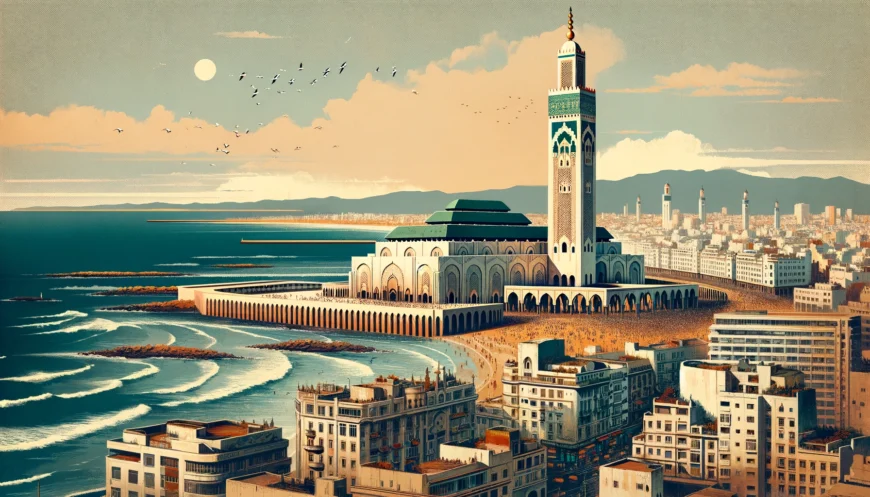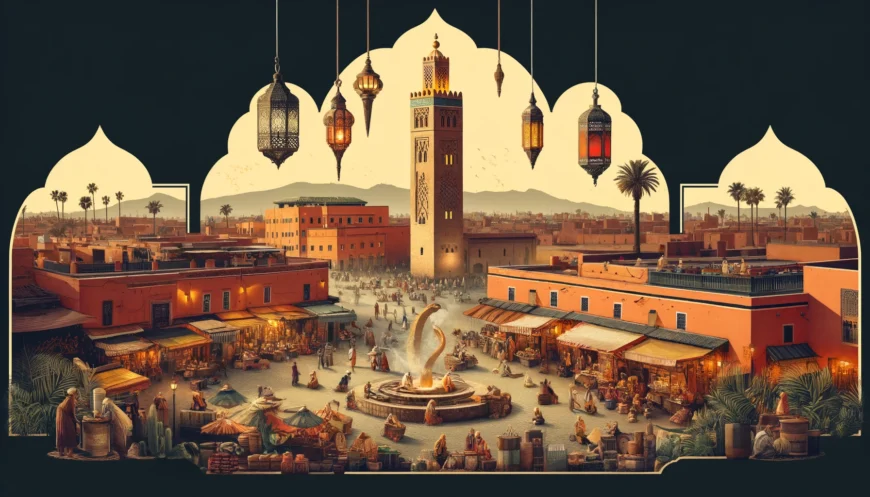Rabat
Discovering Rabat: Morocco’s Capital of Culture and Heritage
Rabat, the capital city of Morocco, stands as a beacon of tranquility and cultural richness on the country’s Atlantic coast. Unlike the bustling streets of Marrakech or the sprawling deserts near Merzouga, Rabat offers a serene yet vibrant atmosphere, where modern governance meets ancient history. For travelers looking to explore Rabat, the city promises an array of captivating experiences, blending the best of Morocco’s historical treasures and contemporary life.

The history of Rabat
Rabat, Morocco’s capital, boasts a rich tapestry of history that spans several millennia, blending influences from various civilizations that have left their mark on this vibrant city. Founded in the 12th century by the Almohad ruler Abd al-Mu’min, Rabat served as a formidable fortress, known as Ribat al-Fath, meaning “The Stronghold of Victory”. Its strategic location on the Atlantic coast and at the mouth of the Bou Regreg River allowed it to play a significant role in Morocco’s defense and trade. Throughout the centuries, Rabat witnessed the rise and fall of empires, including the Romans, whose ancient ruins at Chellah speak to the city’s long-standing significance.
The Kasbah of the Udayas, a 12th-century fortress, stands as a testament to Rabat’s medieval glory, offering panoramic views and insight into the city’s Islamic heritage. Under the French Protectorate in the 20th century, Rabat was chosen as the administrative capital, a status it retained after Morocco’s independence in 1956, evolving into a symbol of the nation’s progress and modernity while preserving its historical legacy. Today, Rabat’s rich history is etched into its architecture, museums, and cultural sites, making it a living museum of Morocco’s diverse past.
Best Things to Do in Rabat
1. Visit the Hassan Tower and Mausoleum of Mohammed V: The incomplete Hassan Tower, intended to be the world’s largest minaret, and the nearby Mausoleum of Mohammed V, are among Rabat’s most iconic landmarks. These sites offer a glimpse into the city’s regal past and architectural grandeur, making them must-visit destinations.
2. Explore the Kasbah of the Udayas: Perched over the mouth of the Bou Regreg river, the Kasbah of the Udayas is a fortified medieval citadel that offers stunning views of the Atlantic Ocean and Rabat’s cityscape. Its blue and white painted walls, narrow winding streets, and peaceful Andalusian gardens provide a picturesque retreat from the city.
3. Stroll Through the Chellah Necropolis: The Chellah is an ancient Roman and Islamic ruin that serves as a peaceful haven of history amidst Rabat’s urban landscape. Its beautiful gardens, haunting ruins, and nesting storks make it a fascinating site for history buffs and nature lovers alike.
4. Discover the Mohammed VI Museum of Modern and Contemporary Art: As a symbol of Rabat’s embrace of modernity, the Mohammed VI Museum of Modern and Contemporary Art showcases an impressive collection of Moroccan and international art. It’s a testament to the city’s growing cultural scene and its commitment to celebrating artistic expression.
5. Relax at the Rabat Beach: Rabat’s beach is a popular spot for both locals and tourists, offering a wide stretch of sand for sunbathing, swimming, and enjoying watersports. The beachfront is also lined with cafes and restaurants, where visitors can savor fresh seafood and Moroccan delicacies while overlooking the ocean.
6. Tour the Royal Palace of Rabat: While access to the palace itself is restricted, the Royal Palace of Rabat’s extensive grounds and majestic gates provide a glimpse into the opulence of Morocco’s monarchy. The changing of the guard ceremony is a spectacle not to be missed.
7. Immerse Yourself in the Rabat Medina: The Rabat medina, though smaller than its counterparts in other Moroccan cities, offers a bustling market atmosphere. Here, shoppers can find a wide array of traditional crafts, spices, textiles, and jewelry, providing a perfect opportunity to purchase authentic Moroccan souvenirs.
Rabat is a city where calm meets cultural vibrancy, offering visitors a diverse tapestry of experiences from its serene beaches and historic sites to its flourishing arts scene. Whether you’re traveling to Rabat to delve into Morocco’s royal history, enjoy its contemporary culture, or simply relax by the Atlantic, the city’s blend of the traditional and the modern ensures an enriching and memorable visit.
Read More...



